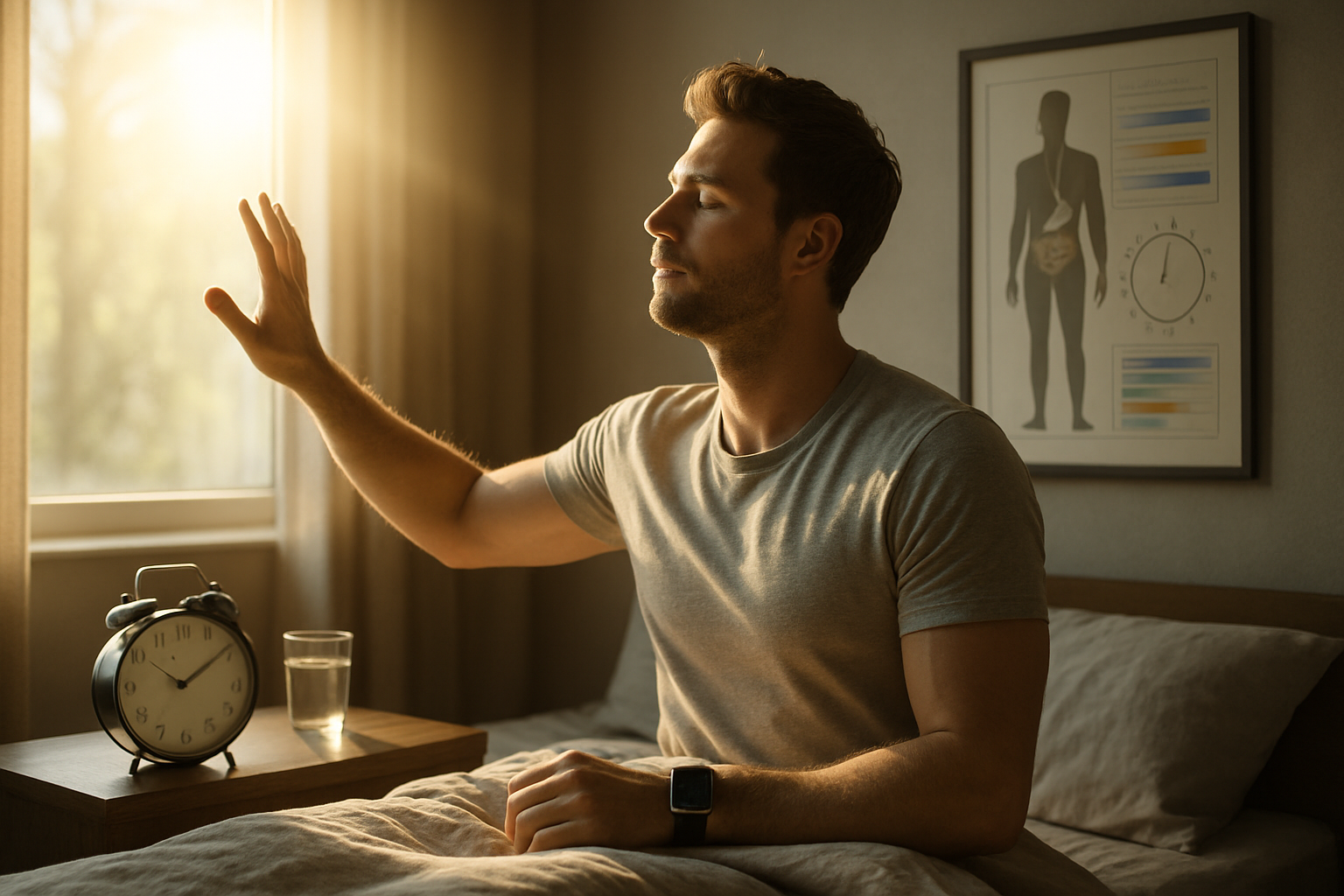Biohacking Your Circadian Rhythm: The Science of Light Therapy
Sleep better, think clearer, and boost your mood—all by harnessing the power of light. Could strategic light exposure be the key to unlocking your body's natural rhythms and optimizing your health? Let's explore the fascinating world of circadian rhythm biohacking through light therapy.

The SCN relies heavily on light cues to synchronize our internal clock with the external environment. When light enters our eyes, it triggers a cascade of neural and hormonal responses that influence everything from our sleep-wake cycle to our metabolism and cognitive function.
Light Therapy: A Modern Solution to an Ancient Problem
In our ancestors’ time, the rising and setting of the sun dictated daily routines. However, modern life has disrupted this natural rhythm. Artificial lighting, late-night screen time, and irregular schedules have thrown our circadian clocks into disarray, leading to a host of health issues.
Enter light therapy—a method of using specific wavelengths and intensities of light to realign our biological clocks. This approach isn’t just about combating seasonal affective disorder; it’s a powerful tool for optimizing overall health and performance.
The Science Behind Light Therapy
Light therapy works by mimicking the spectral composition of natural sunlight, particularly in the blue light spectrum (460-480 nm). This wavelength suppresses melatonin production and increases cortisol levels, signaling to our bodies that it’s time to be alert and active.
Research has shown that exposure to bright light in the morning can help reset the circadian clock, improving sleep quality, mood, and cognitive function. A study published in the Journal of Clinical Sleep Medicine found that office workers exposed to high levels of blue-enriched white light during morning hours reported better sleep quality and reduced daytime sleepiness.
Practical Applications of Light Therapy
Implementing light therapy into your daily routine doesn’t require drastic lifestyle changes. Here are some evidence-based strategies:
-
Morning Light Exposure: Start your day with 20-30 minutes of bright light exposure, either through natural sunlight or a light therapy device. This helps suppress melatonin production and kickstart your body’s natural wake cycle.
-
Blue Light Filtering: In the evening, reduce exposure to blue light by using apps or glasses that filter out these wavelengths. This allows your body to naturally increase melatonin production, preparing you for sleep.
-
Strategic Daytime Lighting: Optimize your work environment with dynamic lighting that mimics natural daylight patterns. Studies have shown this can improve productivity and well-being.
-
Light Therapy for Jet Lag: When traveling across time zones, use light therapy to help your body adjust more quickly to the new schedule.
Beyond Sleep: The Far-Reaching Effects of Light Therapy
While improved sleep is a primary benefit of light therapy, its effects extend far beyond the bedroom. Research has shown promising results in various areas:
-
Mood Regulation: Light therapy has been shown to be effective in treating not only seasonal affective disorder but also non-seasonal depression.
-
Cognitive Performance: Studies have demonstrated improvements in attention, processing speed, and executive function with strategic light exposure.
-
Metabolic Health: Proper circadian alignment through light therapy may help regulate appetite hormones and improve insulin sensitivity.
-
Skin Health: Certain wavelengths of light have been shown to promote collagen production and reduce inflammation, offering potential benefits for skin health and anti-aging.
Illuminating Facts: Shedding Light on Wellness
-
Our eyes contain specialized photoreceptors called ipRGCs that are primarily responsible for detecting light for circadian purposes, separate from our rods and cones used for vision.
-
The human circadian rhythm is slightly longer than 24 hours on average, which is why it’s easier for most people to stay up late than to wake up early.
-
Exposure to blue light at night can suppress melatonin production for up to 3 hours, significantly disrupting sleep patterns.
-
Red light therapy, which uses longer wavelengths, has shown promise in reducing inflammation and promoting cellular repair.
-
Studies have found that proper circadian alignment through light therapy can potentially improve athletic performance and recovery.
A Bright Future for Health Optimization
As we continue to unravel the complexities of our circadian rhythms, light therapy emerges as a powerful tool for health optimization. By aligning our internal clocks with strategic light exposure, we can tap into our body’s natural cycles to enhance sleep, mood, cognition, and overall well-being.
The key lies in understanding and respecting our biological rhythms while leveraging modern technology to support them. As research in this field progresses, we can look forward to even more targeted and personalized approaches to light therapy, illuminating the path to optimal health and performance.





